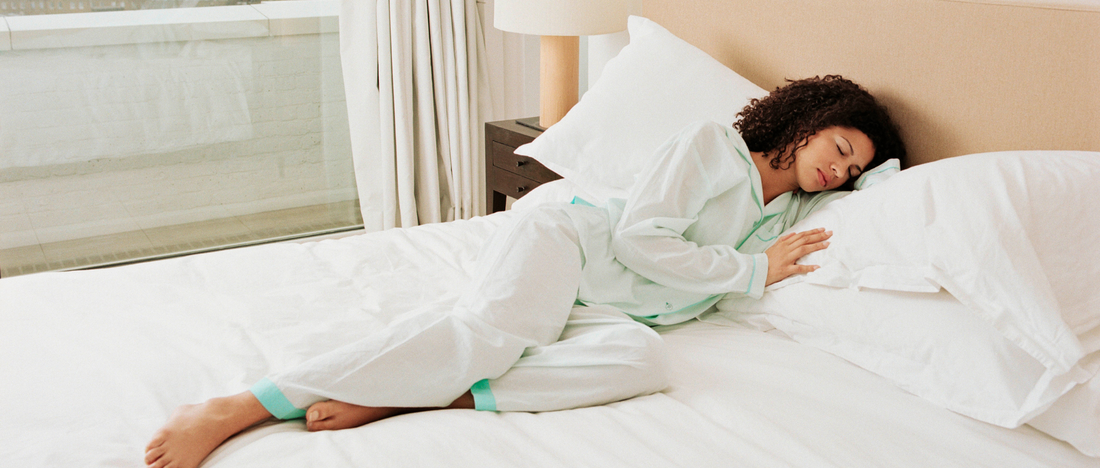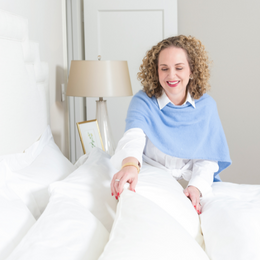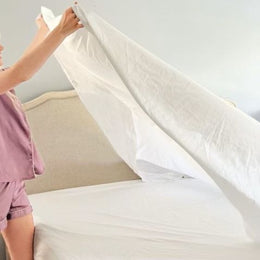Written by Sleepopolis
When it comes to sleeping, the way you fall onto your bed may be the last thing you have on your mind, but sleep positions may be more important than you think. Not only do they contribute to your comfort level, but they also impact your overall health and well-being. Think about it: You spend a significant part of each night in a certain sleep position which, in turn, influences how well and how long you sleep along with how your body feels when you wake up the next morning.
There are a number of factors that can determine your preferred sleep position, including age, gender, and pre-existing back or joint conditions. We asked medical experts their thoughts on sleeping on your back. According to them, there’s really not a wrong or a right sleep position; however, their insights suggest that back sleeping is often the optimal approach.
Benefits of Sleeping on Your Back
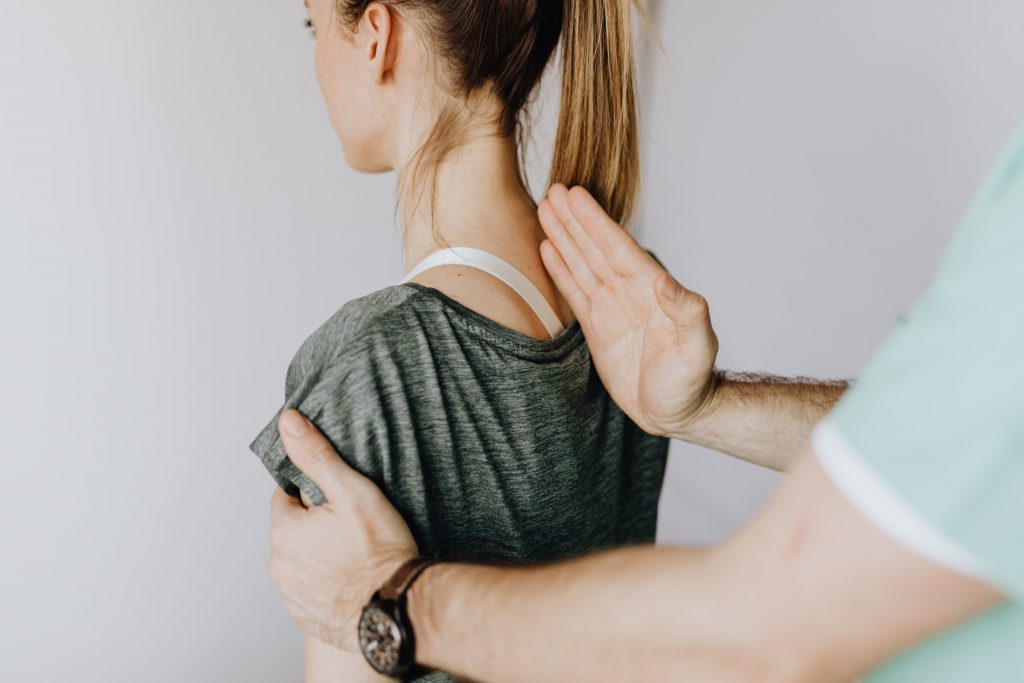 Encourages spinal alignment
Encourages spinal alignment
Back sleeping promotes a natural, healthy posture, which can reduce your risk of waking up in the morning with stiffness, aches, and pains. This is especially true if you sleep with a small pillow under your knees and if you have the right pillow (1). A pillow under the knees reduces stress on the back while a good pillow properly supports your head and the natural curve of your neck.
According to Dr. Gil Kentof, Founder of Dr. Gil Center for Back, Neck, and Chronic Pain Relief: “Sleeping on your back adds benefits to overall spinal health. It allows the muscles in your spine to remain more relaxed and allows for better alignment of the neck, mid and lower back. Those who suffer from lower back pain often find it beneficial to put a pillow under the knees so that the knees are slightly bent while sleeping on the back.”
Lessens chronic pain and inflammation
Because back sleeping reduces pressure and compression, it can help alleviate chronic pain conditions. These include joint pain caused by arthritis and other inflammatory conditions. According to Dr. Vikram Tarugu of Detox of South Florida, when you sleep on your back your weight is uniformly dispersed and will distribute around your body’s widest region, placing less tension on the pressure points.
Dr. Gil Kentof adds: “The other benefit of sleeping on your back is that it reduces pressure on the hip joints and shoulders.” Sleeping on your back is more beneficial because “we often see patients develop hip bursitis or shoulder tendinitis from sleeping on the same side of their body for years.”
Finally, Dr. Hiral Jain Surana (PT), Co-Founder of TRIO Physiotherapy tells us that “sleeping on your back avoids unnecessary pressure on shoulders, preventing you from developing Frozen Shoulder or Adhesive Capsulitis, especially in colder weather.”
Relieves sinus build-up
Those who struggle with allergies or sinus pressure may find that sleeping on their back with an elevated head and neck helps them breathe more clearly. That’s because mucus tends to pool and accumulate in the sinuses at night, particularly when your head is in a downward position (2).
In order to relieve this congestion, Dr. Tarugu recommends that folks “sleep on a few pillows with the head elevated to maintain a position where your head is above the heart. That will reduce the pooling of blood flow in the nose. By contrast, lying flat allows the mucus to build up in your sinuses, where it can obstruct your nasal passages and disrupt sleep.”
Improves skin quality
“The easiest way to prevent wrinkles in the face and neck is to sleep on your back because it prevents the skin from getting compressed by pillows and patterned sheets,” explains Lesley Reynolds, a celebrity columnist and skin health expert based in the UK. In fact, “sleep wrinkles” tend to form during side and stomach sleeping due to the skin being stretched, compressed, and tightened (3). For this reason, many dermatologists recommend back sleeping.
Dr. Kemunto Mokaya, board-certified dermatologist, author, and international speaker based in Knoxville, TN, says that sleeping on your back may also reduce breakouts and skin irritation.
“Sleeping on our backs allows us to reduce contact with germ-containing pillowcases,” Dr. Mokaya explains. “It leads to less facial skin irritation and break-outs, because the skin is not exposed to all the dirt/germs that pillowcases absorb.”
Downsides to Sleeping on Your Back
While there are many practical benefits to sleeping on your back, it’s worth mentioning a couple of potential dangers that can occur.
One of the biggest caveats for back sleepers to be aware of is that it can sometimes cause the tongue to block the breathing tube. While this isn’t a big worry for the average, healthy sleeper, it can be genuinely hazardous for those who suffer from sleep apnea.
One more thing to be aware of is that sleeping on your back may make it more likely for you to snore. In addition to bothering your spouse or partner, this can sometimes mean your sleep isn’t as sound and as solid as it might be otherwise.
How to Train Yourself to Sleep on Your Back
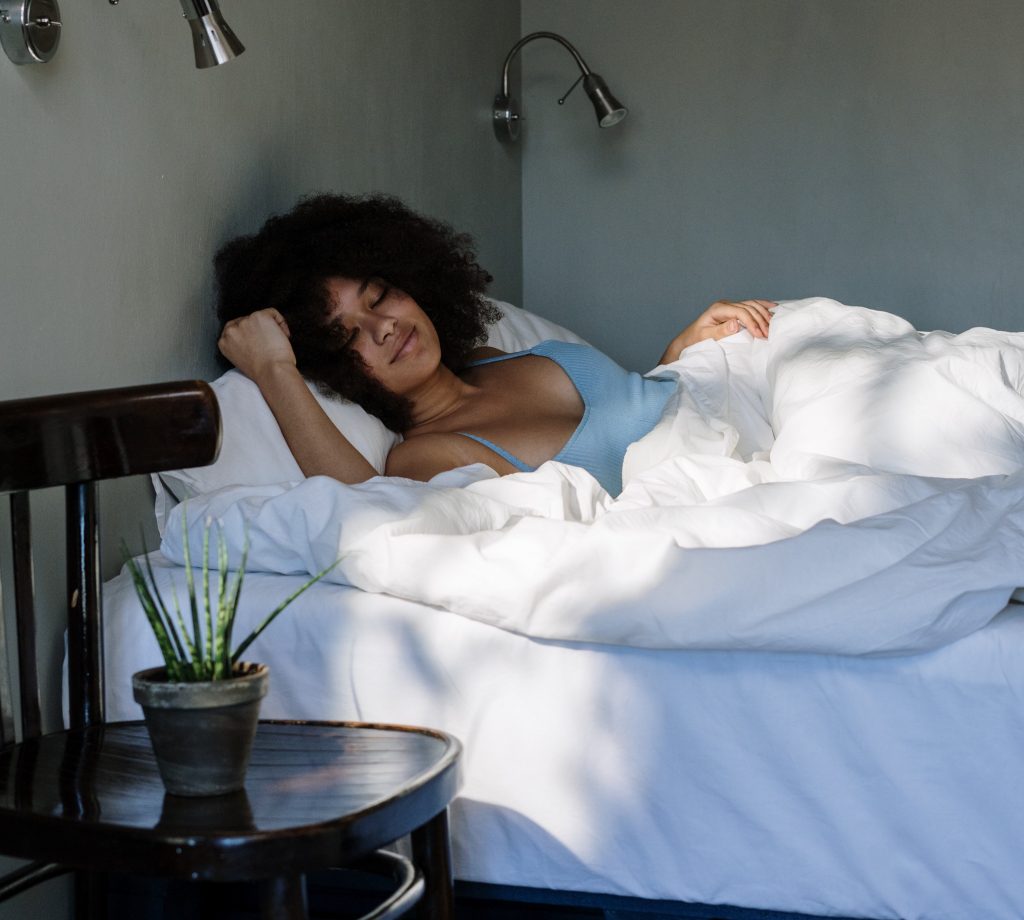
According to Dr. Rick Swartzburg, a Chiropractor and mattress designer, “you absolutely can train yourself to sleep on your back.” Even if your natural inclination is to sleep on your side or stomach, it’s not impossible for you to seize some of the health benefits that back sleeping provides. Here are a few tips:
Make sure you have the right mattress
The first step is making sure you have a reasonably firm surface to sleep on. Plush mattresses may work well for side sleepers, but for back sleepers, they can cause you to feel like you’re sinking into the mattress. Get a mattress that has less “give” or is more firm. Dr. Swartzburg cautions that “the postural advantages are only seen when you are using a firm enough mattress to support your back or if you are using a mattress that has more support for your heavier hips to prevent the hammocking that leads to poor spinal alignment.” With that said, innerspring and latex mattresses are usually the best for back sleepers, but there are some decent memory foam models, as well.
Get the right kinds of pillows
If your mattress is sub-par, a pillow (or mattress topper) can improve it. But beware–if your mattress is already quite firm, a good pillow may actually result in you over-elevating your neck. Look for a pillow that offers a medium loft, or a pillow that allows you to add or remove filling to adjust the loft. Experiment with some different options that allow your head and neck to feel natural and comfortable. Sometimes, a simple rolled-up towel may actually work better than a pillow.
Place a pillow under your knees
You may also wish to try sleeping with a pillow under your knees. (In some cases, a pillow under the lower back works just as well). Not only can this help relieve pressure at your lower back, but it can also reduce the likelihood that you’ll roll over or adjust your sleeping position in the night.
Spread out your arms and legs
Just because you’re lying on your back doesn’t mean you need to sleep like you’re in a casket, or in what’s commonly known as the “soldier” position. Feel free to spread out your arms and legs if that helps you feel more comfortable. In fact, doing so will likely help relieve pressure points, and allow you to wake up without creakiness or stiffness. You might consider the “starfish” position, as well, which involves spreading the legs and bending the arms at the top.
Build a pillow fort
If you need to remind your body of its boundaries, a pillow fort can help. Simply add some pillows all around your body to serve as a gentle reminder not to flip over onto the side or stomach. Alternatively, you can place pillows under your arms, which offers additional support, both holding your body in place and also helping keep your shoulders comfortably elevated.
Consider a weighted blanket
Not everyone likes the feeling of falling asleep under a weighted blanket. If you’ve never tried it, though, you should know that it can sometimes feel quite comforting. And, the weight of the blanket may hold your body in place, making it a bit easier for you to comfortably maintain your sleep position throughout the night.
Be patient with yourself
Changing your sleep position isn’t something that’s going to happen overnight. But if you stick with it, you’ll eventually find yourself able to break out of old habits and start some healthy new ones.
When it comes to sleeping positions, all of us have our own preferences and comfort levels. But don’t let established habits and routines prevent you from sleeping in the healthiest way possible. For many, that means back sleeping. And even if that’s something that doesn’t come naturally, it’s definitely something you can learn.
References
- “Good Sleeping Posture Helps Your Back.” Good Sleeping Posture Helps Your Back – Health Encyclopedia – University of Rochester Medical Center, www.urmc.rochester.edu/encyclopedia/content.aspx?ContentTypeID=1&ContentID=4460.
- Publishing, Harvard Health. “What to Do about Sinusitis.” Harvard Health, Apr. 2009, www.health.harvard.edu/staying-healthy/what-to-do-about-sinusitis.
- Goesel Anson, MD, FACS, Michael A.C. Kane, MD, Val Lambros, MD, FACS, Sleep Wrinkles: Facial Aging and Facial Distortion During Sleep, Aesthetic Surgery Journal, Volume 36, Issue 8, September 2016, Pages 931–940, https://doi.org/10.1093/asj/sjw074
